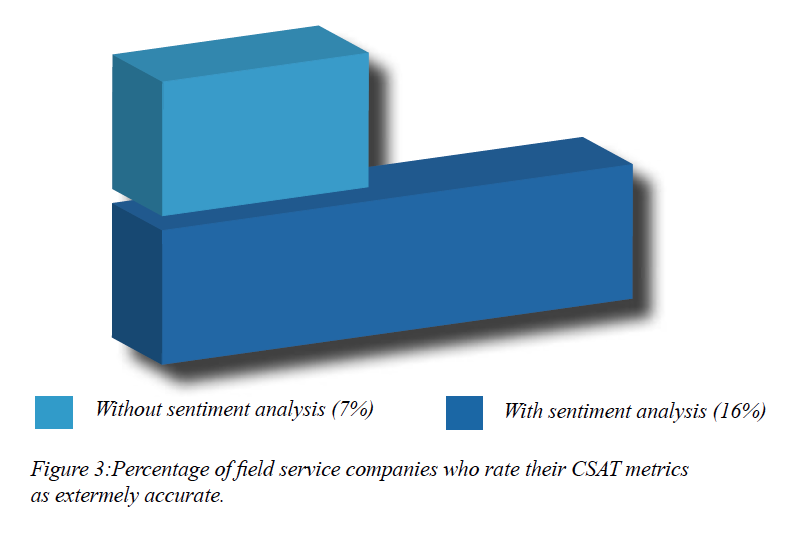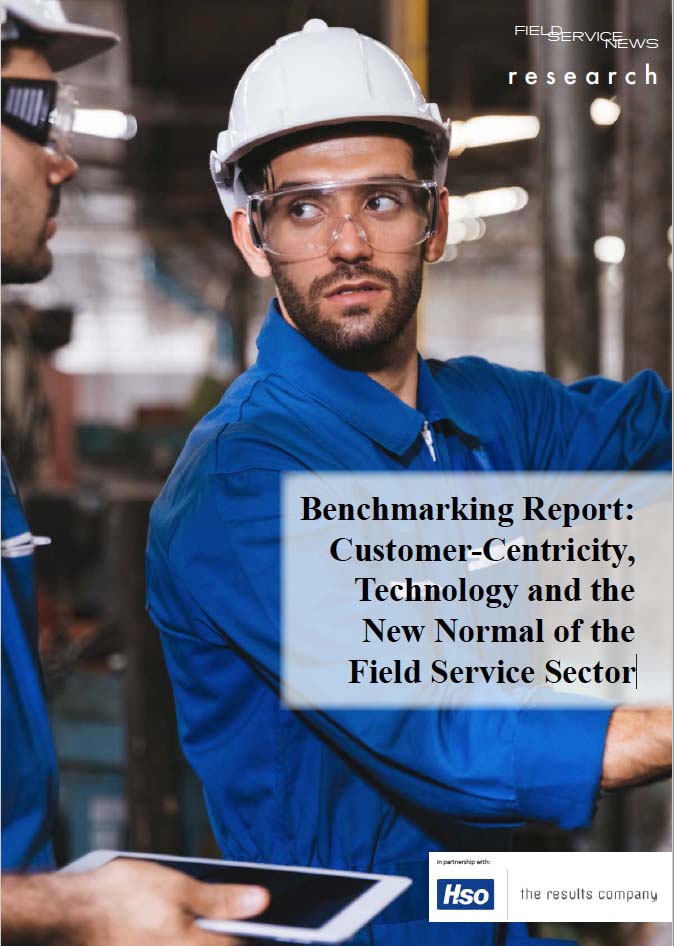Do you trust your customer feedback data?
In the opening series of questions within this study, we identified the prevalence and importance of CSAT metrics within field service organisations as a measurement of success both operationally and more strategically within the broader aims of the organisation.
Having now identified that these metrics are not only widely used but broadly deemed to be ‘extremely important’ amongst the majority of field service organisations across several different strategic areas, in the following line of questioning we wanted to explore how companies are measuring their performance in terms of driving customer satisfaction.
We asked our respondents which of the following metrics they use to identify customer satisfaction.
- Net Promoter Score (NPS)
- Sentiment analysis
- Social media monitoring
- Management level customer contact
- Customer satisfaction survey
The responses to this particular set of questions revealed that while measuring such metrics is highly prevalent and significantly weighted towards being highly important to field service organisations, the tools used to do so remain reasonably rudimentary.
The three most commonly cited metrics were customer satisfaction surveys (66%), management level customer contact (56%) and NPS (50%) – all of which play an essential role within measuring customer satisfaction but are simpler metrics to implement and measure.
Sentiment analysis and social media monitoring (the most sophisticated metrics included within the list) were leveraged by relatively few field service organisations (16% and 12%, respectively). Whilst this is an increasingly important area, we hypothesise that technologies that could drive insight from such metrics may be less widely understood.
However, with the importance of CSAT metrics being shown clearly in the study, tools to measure them appear to be underused in our sector and this, therefore, provides an area where investment in such tools could yield an opportunity to gain competitive advantage.

This is further evidenced by the findings of another of the questions within this section of the study. We asked our respondents how accurately they felt the metrics they measured for customer satisfaction provide a true reflection of their customer satisfaction levels.
The majority of field service companies in the study (54%) stated that they felt the metrics they measured were only reasonably accurate.
However, when we contrast those organisations that are utilising sentiment analysis as part of their CSAT measurements to the broader response set, we see the number of field service organisations that state their CSAT metrics are an ‘extremely accurate’ reflection of their actual customer satisfaction levels more than double from 7% to 16% (figure 3, above)
This would suggest two takeaways from the study data so far.
Firstly, while there is clear, growing evidence that on a fundamental level the use of CSAT metrics as a core KPI and success measurement is prevalent within the field service sector, the approaches used are currently relatively immature.
Secondly, the results suggest that the use of more sophisticated measurements of CSAT such as sentiment analysis can potentially yield significant improvements in terms of the effectiveness and accuracy of how we monitor what is an increasingly crucial element of field service operations.

This content is available exclusively for FSN Premium members. Please either log-in or subscribe for access


